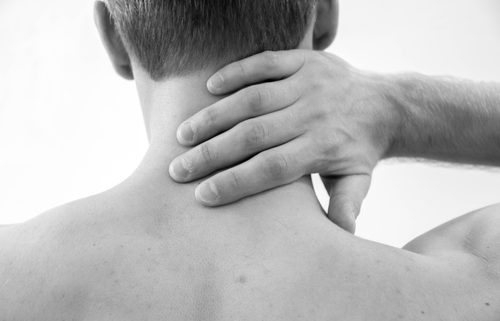Back Pain from Sports: Prevention and Treatment
Back Pain can be classified into two categories: Acute Pain and Chronic pain.
– Acute Pain: Possible causes include a newly broken bone (vertebra) in the spine from injury or osteoporosis, bulging or herniated discs, nerve irritation from arthritis or degenerative conditions, and infection.
– Chronic Pain: Lasting six months or longer, chronic pain may be caused by previous injuries, arthritic or degenerative conditions including bulging discs, spine canal narrowing (spinal stenosis), old fractures, and bone spurs. This pain may occur daily or intermittently and can interfere with activities of daily living.
Whether you are an athlete or a person who exercises regularly, you can be almost certain of one thing regarding back pain: sooner or later, you will have it. Up to 20% of all sports accidents involve an injury to the lower back or neck. But, some back injuries are simply unavoidable. Athletes accept the risk of back injuries when they decide to play a sport or exercise regularly, vigorously and over a long period of time. Back strains, tears in tendons or ligaments are among the most common sports injuries. Sometimes back strains are triggered by seemingly harmless movements, such as bending over to tie a shoe, picking up a child or reaching up to get something out of a cabinet. Structural problems can also cause lower back pain and may accompany strains. A bulging disk (the soft material between vertebrae) may press against a nerve. And the lower back is one of the most frequent areas affected by osteoarthritis.
Most sports injuries result from:
– Doing too much too quickly.
– Overestimating your fitness and ability.
– Lack of preparation/poor technique.
– Pushing your body too hard (overtraining).
– Poor equipment and accidents.
Some of the ways to prevent back injuries are:
– Avoid sitting in one position for long periods of time. Get up and stretch every 20-25 minutes.
– Execute each movement required in your sport gradually increasing the speed of the movement, before returning to normal training and competition.
– Use lower back support to keep the pressure distributed evenly on the muscles of the lower back.
– Include physical activity in your daily routine. Maintaining a healthy weight minimizes stress on your back. For most healthy adults, the Department of Health and Human Services recommends at least 150 minutes a week of moderate aerobic activity or 75 minutes a week of vigorous aerobic activity – and strength training exercises at least twice a week. Combine aerobic exercise, such as swimming or walking, with exercises that strengthen and stretch your back muscles and abdomen..
– Lift properly. When lifting and carrying a heavy object, lift with your knees and tighten your core muscles. Hold the object close to your body. Maintain the natural curve of your back.
– Modify repetitive tasks. Use lifting devices, when available, to help you lift loads. Try to alternate physically demanding tasks with less demanding ones. If you work in front of a computer, make sure that your monitor, keyboard, mouse and chair are positioned properly. If you’re on the phone most of the day, use a headset. Avoid unnecessary bending, twisting and reaching. Limit the time you spend carrying heavy briefcases, purses and bags.
If you are experiencing back pain, it is important to see a doctor and find out exactly what is causing the pain. Once the cause of pain is found, your doctor will recommend a treatment plan that fits your needs, including exercises that will improve your condition.
Interventional Physicians of Indiana is a leading provider of kyphoplasty and back pain management services and has served Central Indiana since 2003. We offer state-of-the-art, minimally invasive, nonsurgical procedures, and have one of the largest single center practices in the country.




